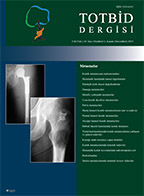
Prostate cancers are among the top five types of cancers that are most commonly diagnosed and mostly cause death in men. 95% of prostate cancers are adenocarcinomas originating from prostatic gland acinis. The increase in life expectancy with early diagnosis and treatment methods explains the high rate of metastasis in prostate cancer. It is reported that 90% of the radiological findings of bone metastases are present in treatment-resistant metastatic prostate cancers, and the first metastasis site in 80% of these patients is the bone. The prostate cancers that most commonly metastasize to bone include ribs, vertebrae, and pelvis; but metastases in cranium and long bones have also been reported in the literature. The symptoms of prostatism, now called lower urinary tract symptoms (LUTS), are among the main symptoms of prostate cancer. X-ray radiographs of the patients usually show widespread sclerotic foci due to increased osteoblastic activity. Likewise, lytic lesions can be seen on radiographs. Classically, TNM (tumor, lymph node, metastasis) classification is utilized in prostate cancer staging. The aim of clinical staging in prostate cancer is to estimate the prevalence of the disease, and to establish the most appropriate treatment algorithm according to the prognosis. Accordingly, advanced staging for low-risk groups is not recommended. Bone scintigraphy, computed tomography (CT) or magnetic resonance imaging (MRI) are recommended for the middle-risk and high-risk patients. Active monitoring, symptomatic treatment, radical prostatectomy, radiotherapy, and brachytherapy are the treatment modalities according to the risk groups.